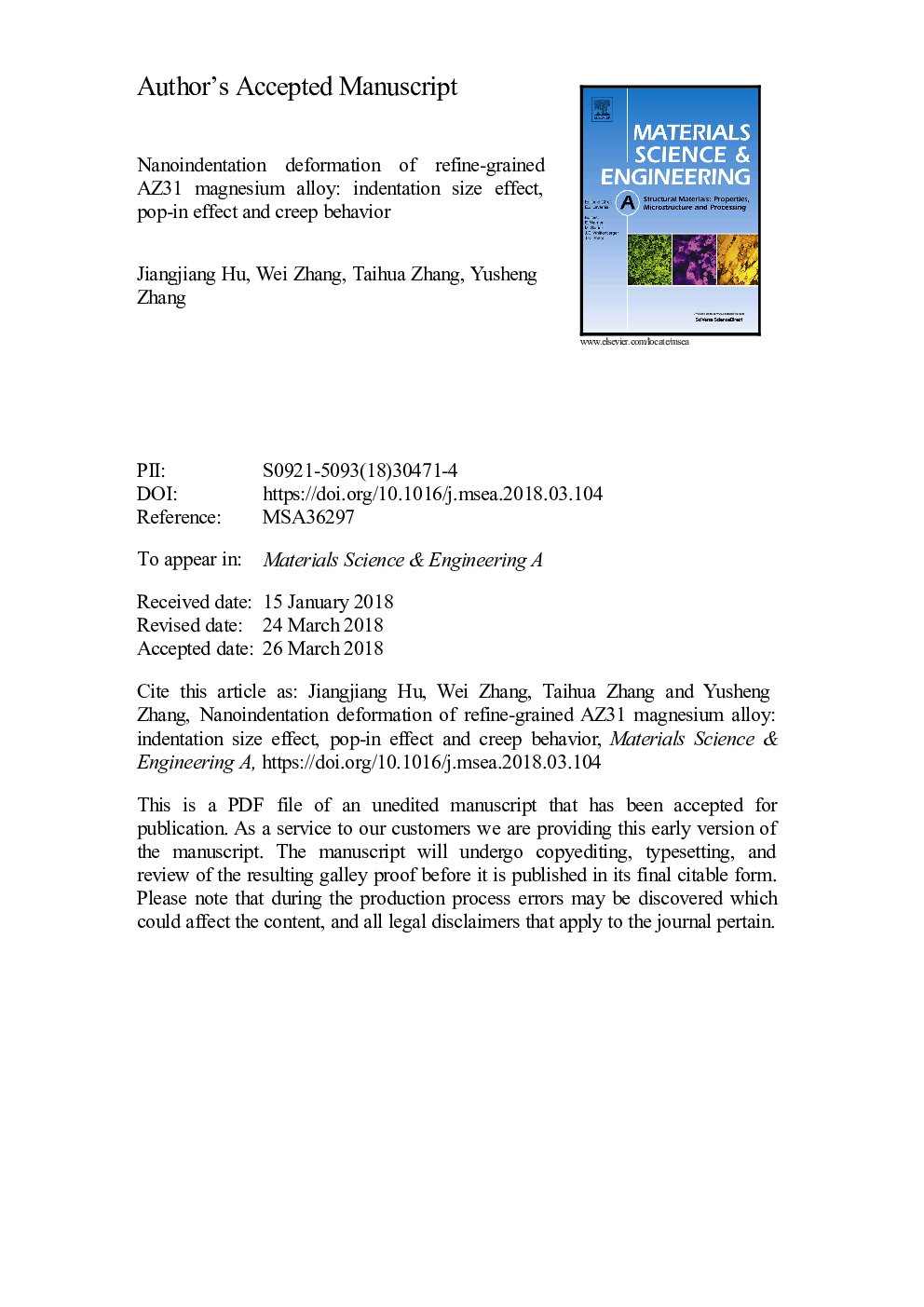| Article ID | Journal | Published Year | Pages | File Type |
|---|---|---|---|---|
| 7972386 | Materials Science and Engineering: A | 2018 | 21 Pages |
Abstract
Nanoindentation tests were performed at room temperature, to study the coupling effects of grain size and strain rate on the indentation size effect (ISE), pop-in effect and creep behavior of refine-grained AZ31 alloys. The relatively inconspicuous ISE of the refine-grained AZ31 alloys compared with its coarse-grained (CG) counterpart is the result of more density of statistically stored dislocations involved in the plastic deformation. The gradually disappeared pop-in effects in the nanocrystalline (NC)/ultrafine-grained (UFG) AZ31 are associated with no/few deformation twinning involved in the plastic deformation. For the NC/UFG AZ31, the highly unstable dislocation absorption and interactions between dislocation and high-angle GBs are responsible for the primary and latter nanoindentation creep behaviors, respectively. While for the CG+twinning/CG AZ31, the relevant mechanisms are the relatively stable dislocation motion and interactions between dislocation and low-angle GBs.
Related Topics
Physical Sciences and Engineering
Materials Science
Materials Science (General)
Authors
Jiangjiang Hu, Wei Zhang, Guangjian Peng, Taihua Zhang, Yusheng Zhang,
